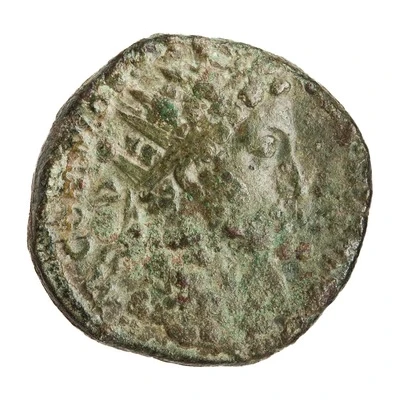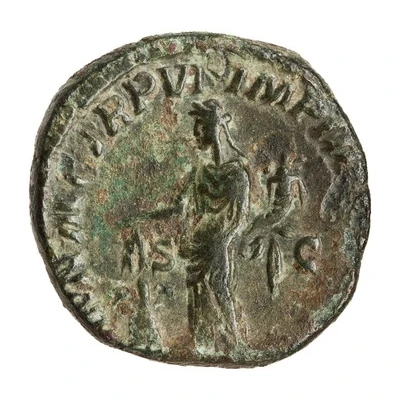


© American Numismatic Society (ANS)
Dupondius - Commodus ANN AVG PROV DEOR TR P VI IMP IIII COS III P P S C; Providentia
181 year| Bronze | 11.3 g | 23 mm |
| Issuer | Rome › Roman Empire (27 BC - 395 AD) |
|---|---|
| Emperor | Commodus (Lucius Aurelius Commodus) (177-192) |
| Type | Standard circulation coin |
| Year | 181 |
| Value | 1 Dupondius = ⅛ Denarius |
| Currency | Denarius, Reform of Augustus (27 BC – AD 215) |
| Composition | Bronze |
| Weight | 11.3 g |
| Diameter | 23 mm |
| Shape | Round (irregular) |
| Technique | Hammered |
| Demonetized | Yes |
| Updated | 2024-10-06 |
| Numista | N#265622 |
|---|---|
| Rarity index | 100% |
Reverse
Annona, draped, standing left, holding corn-ears in right hand and cornucopiae in left hand; to left, modius.
Script: Latin
Lettering: ANN AVG PROV DEOR TR P VI IMP IIII COS III P P S C
Translation:
Annona Augusti. Providentia Deorum. Tribunicia Potestate Sexta, Imperator Quartum, Consul Tertium, Pater Patriae. Senatus Consultum.
Imperial grain supply. Foresight of the gods. Holder of tribunician power for the sixth time, supreme commander (Imperator) for the fourth time, consul for the third time, father of the nation. Decree of the senate.
Comment
Mass varies: 10.92–11.72 g;Example of this type:
American Numismatic Society (ANS)
Source:
Online Coins of the Roman Empire (OCRE)
Interesting fact
The Dupondius - Commodus coin features an image of the Roman goddess Providentia on its reverse side, which is an interesting fact in itself. Providentia was the goddess of foresight and providence, and her presence on the coin may have been intended to convey the idea that the Roman Empire was guided by a sense of divine providence. However, it's worth noting that the coin's depiction of Providentia is not entirely accurate. The goddess is shown holding a scepter and a shield, which are symbols of imperial power, rather than the traditional symbols of Providentia, which include a pair of dice or a globe. This suggests that the coin's designers may have been more interested in emphasizing the power and authority of the Roman Empire than in accurately representing the goddess Providentia.